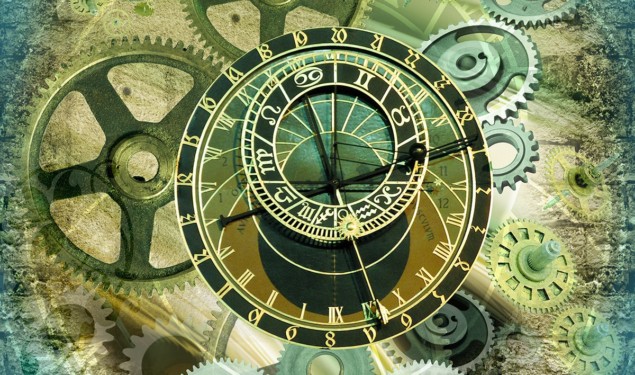
Researchers in the US and Sweden have shown that it is possible to operate a particle collider like a set of gears, allowing particles to circulate at different velocities. This could be a boon for nuclear physicists, allowing them to smash together different types of ions at different energies without having to alter the size of their colliders.
A particle collider like the Large Hadron Collider (LHC) at CERN comprises two rings that circulate two beams of particles in opposite directions before colliding the particles in a detector (or detectors). Particles in the rings are circulated in bunches, so great care must be taken to ensure that the bunches collide at the interaction point within a detector.
Unlike the high-energy (and therefore highly relativistic) particles accelerated at the LHC, the lower-energy protons and ions used in nuclear physics experiments experience significant changes in velocity as a function of their kinetic energy. A particle dropping from 250 GeV to 25 GeV, for example, means a drop in velocity of about 0.07%.
This creates a problem when it comes to colliding particles moving at different velocities. Whether the collisions involve just protons and ions, or whether they also feature electrons (as will be the case with the Electron Ion Collider, to be built at the Brookhaven National Laboratory in the US), the two bunches must meet up at a detector’s interaction point.
Technically demanding and expensive
One way of achieving this is simply to change the circumference of the rings around which the two beams circulate continuously. This change needs to be in line with that of the velocity – so that a 0.07% change equates to an adjustment of about 2.1 m for a 3 km circumference ring. But mechanically moving an arc of that length would be technically demanding and expensive.
Hence the idea of “changing gears”, which would allow particles in the two rings to circulate at different speeds while still meeting up at the interaction point. This is achieved by having different numbers of bunches in each ring. In a very simple case, three bunches in one ring would each travel at 4/3 the velocity of four bunches in the other.
To show that such a scheme could in principle be made to work, Edith Nissen of the Thomas Jefferson National Accelerator Facility in Virginia, US, got together with Anders Källberg and Ansgar Simonsson at Stockholm University to work on a room-sized device in Stockholm known as the Double ElectroStatic Ion Ring ExpEriment (DESIREE). This consists of two miniature storage rings arranged so that one set of ions with an energy of no more than 25 keV can be merged with another at up to 100 keV while moving in the same direction.
Unequal numbers of bunches
Nissen and colleagues aimed to show that they could circulate unequal numbers of bunches in the two rings such that the ions from the different rings always merged in the same portion of the device. They did this using nitrogen ions with about twice the energy of carbon ions, measuring the very slight delay of the faster moving nitrogen at the start of the 1 m long merger region and a correspondingly slender lead at the end (which implies that the bunches in each case aligned exactly in the middle).
The researchers carried out their experiment in two configurations – four bunches versus three and five bunches versus four. By reducing the energy of the nitrogen ions to compensate for the smaller ratio in the second case, they showed that they could indeed mesh both sets of gears. They found that the timing differences at the two ends of the merger region corresponded with theoretical expectations given the velocity ratio in each case – showing that they could keep these timings constant over the course of thousands of cycles around the rings.
Nissen points out that the pattern of collisions in a gear-changing scheme is more complex than normal. Rather than each bunch in one beam interacting with just one specific bunch in the other – as would be the case if both beams had the same velocity – it interacts with many bunches, if not all.
Distorted bunches
That characteristic could be advantageous, argues Nissen, in that one poorly formed bunch would not significantly alter the quality of data in experiments where spin polarization, for example, is important. However, she says it could also create problems because colliding bunches will distort one another. If a bunch in one beam always meets the same bunch in the other, then those bunches will settle down to an equilibrium state. But if instead different bunches are colliding on each turn, then the beams could smear out, degrading the data.

Electron accelerator recycles energy
In fact, in 2013 Yue Hao and two other physicists at Brookhaven and Stony Brook University published a theoretical study showing how such distortions could seriously reduce the rate of collisions. Calculating the impact of several different effects – including instabilities in beam position and width – they concluded that gear-changing schemes “should be avoided”.
Nissen acknowledges that DESIREE does not generate intense enough beams to study these distortions, but nevertheless reckons it could help counteract this problem in other machines by allowing scientists to refine the physics of gear changing. “This experiment was the first step in understanding gear changing in real-world colliders,” she says.
A preprint describing the latest research has been uploaded to arXiv.



